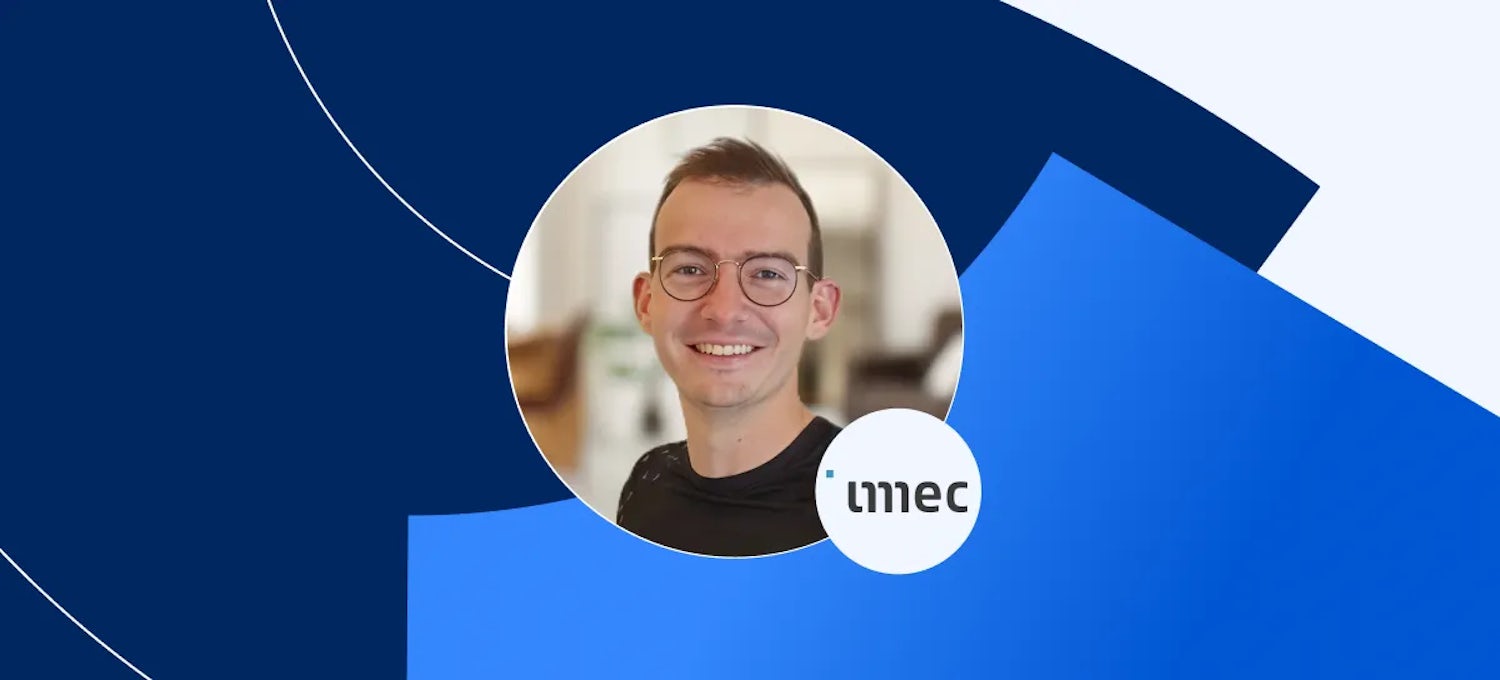Breaking Down Silos: 3 Strategies for Aligning Technical Teams with Learning Initiatives
Learn how to forge strong technical team-L&D partnerships and advance organizational skills development with insights from imec's Matthias Nauwelaers.

As semiconductor companies race to innovate in AI and advanced computing, skills gaps threaten to slow progress. Leading research company imec faced this reality when traditional classroom training couldn't keep pace with their technical teams' evolving needs. Matthias Nauwelaers, Talent Business Partner, recognized that impactful learning experiences must fit into the flow of work, supported by current technical content and flexible pathways.
Their journey offers valuable lessons for other organizations facing similar challenges. imec's transformation exemplifies what many companies are learning: Strong collaboration between functional leaders and learning and development (L&D) drives alignment, increases adoption, and equips teams to thrive despite looming skill shortages.
This article explores Matthias' key strategies for building effective partnerships, giving functional leaders actionable tools for implementing continuous learning initiatives.
Note: This article is based on insights from the Building High-Performing Teams through Targeted Training playbook
Three Strategies for Effective Technical-L&D Collaboration
1. Create strategic alignment around learning goals and business objectives
Functional leaders must build strong partnerships with L&D teams. This means collaborating early and often, with L&D understanding what technical teams need to drive impact.
This dialogue should be ongoing and rooted in curiosity. Learning and development teams leverage technical insights to iterate on programs, while functional leaders explore how training addresses their growth areas.
Matthias recommends regular conversations to reflect on programs and initiatives. His approach focuses on understanding challenges firsthand: "Meet people where they are before collaborating on learning. What helped me was walking around on the floor, seeing what challenges people were experiencing, and being open to suggestions." To ask better questions and build rapport with the technical employees he serves, Matthias has even taken it upon himself to study the basics of semi-conductor technology.
Altogether, these sorts of investments build trust and create lasting partnerships. As Matthias explains: "I always try to invest in that long-term relationship because that way in the future they will think of HR from the get-go rather than an afterthought."
Functional leaders must also provide feedback to connect learning initiatives back to organizational goals. This enables L&D to communicate impact to the C-suite.
imec's pilot projects with Coursera demonstrated this approach. Initially, technical team members sought out AI and Machine Learning courses like Programming for Everybody (Getting Started with Python) and IBM AI Engineering Professional Certificate. Over time, as a “side effect” of the organization moving toward a more project-based formation, employees started to enroll in project management-related offers like the Google Project Management Professional Certificate.
The results spoke volumes: 10.2 average learning hours per employee versus the industry benchmark of 4.2—achieved in just six months.
"I presented metrics to the C-suite that included the average number of learning hours per learner," shares Matthias. "This helped them understand the value of Coursera in comparison to traditional classroom training."
2. Enable leaders as learning participants and champions
Successful partnerships require engaging functional leaders as both learners and advisors in the process. Rather than assuming leaders will automatically support learning initiatives, L&D teams must actively involve them.
One of the most effective ways to build leadership support is letting leaders experience the learning themselves. This strategy proved powerful when imec released new Coursera licenses via an intranet announcement and received pushback from a manager who worried her team was too busy for learning.
Instead of debating the point, Matthias invited her to participate: "I offered her a license and explained the learning rationale. She enrolled in Coursera courses and ended up becoming a big advocate of the platform."
The lesson? Middle managers can become champions if you give them the same opportunities you provide to their teams.
3. Use data to identify learning needs and target high-potential learners
Effective partnerships help functional leaders identify both what skills are needed and which individuals or groups would benefit most from upskilling initiatives. By using data to inform these decisions, organizations can accelerate skill development in critical areas.
For instance, imec's learning needs assessment revealed a gap in their leadership development program for individual contributors aspiring to become people managers. "We knew we had an established learning track for people managers, but we didn't yet have a track for becoming one," observes Matthias.
Leadership content frequently appeared in tracked metrics, inspiring Matthias and his team to curate a collection of leadership content and to guide people towards it. This also helped identify individuals seeking career growth, enabling functional leaders to provide targeted learning opportunities to their most promising team members. Matthias is now exploring this same data-driven approach to support their organizational shift toward project-based work.
To further ensure that training is effective, the imec L&D team regularly conducts evaluations after each training with questions about relevancy and on-the-job application. This sort of qualitative data provides insight into where to focus future L&D efforts and also helps advocate for more investment.
Building collaborative partnerships for lasting impact
Learning and development initiatives require insights and buy-in from functional leaders to succeed. Matthias understood that driving adoption meant engaging middle managers as learning champions, involving them early in the development process while empowering them to test-drive platform features.
His closing advice for other L&D professionals is simple but effective: "Let leaders experience what a great learning experience could be for themselves. Start with one or two small initiatives. See how they're evaluated and what the impact is. Once they see the benefit, they'll be open to exploring other ways of learning."
By bridging technical teams and L&D, learning initiatives become more resonant, adaptive to learner needs, and drive measurable business outcomes.
This content has been made available for informational purposes only. Learners are advised to conduct additional research to ensure that courses and other credentials pursued meet their personal, professional, and financial goals.
